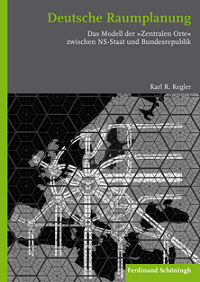About the fascination of symmetry
DOI:
https://doi.org/10.22029/ko.2016.979Abstract
Walter Christaller developed his "Zentrale-Orte-Modell " in 1933 as part of his dissertation "Die zentralen Orte in Süddeutschland". This theory "understands cities and settlements as functional centers" (p.54; my translation) which provide certain economic functions within corresponding neighborhoods, while being divided by Christaller into hierarchically structured supply systems. In his latest historical study, Deutsche Raumplanung. Das Modell der "Zentralen Orte" zwischen NS-Staat und Bundesrepublik Karl R. Kegler traces the career of this model via its application and reception between the Nazi period and the first decades of Post-war Germany. Kegler carefully dissects Christaller’s theory, compares the concept of central places with other theories of contemporary spatial planners or geographers, and reflects upon its lines ofdevelopment. His conclusion questions the theoretical foundation of the established spatial planning in the German context.

Downloads
Published
Issue
Section
License
All articles (not book covers) in KULT_online from issue 50 on are published under the license Creative Commons Attribution 4.0. All published articles may be reused under the conditions of the license, particularly for commercial purposes and through editing the article (Human-Readable Summary). All authors (have) permitted the publication under the above mentioned license. There is no copyright transfer towards KULT_online. For all book covers specific rights might be reserved, please contact the respective publisher for any lawful reuse. All contributions published in issue 1-49 of KULT_online are free available online and protected by the German Copyright Law.



